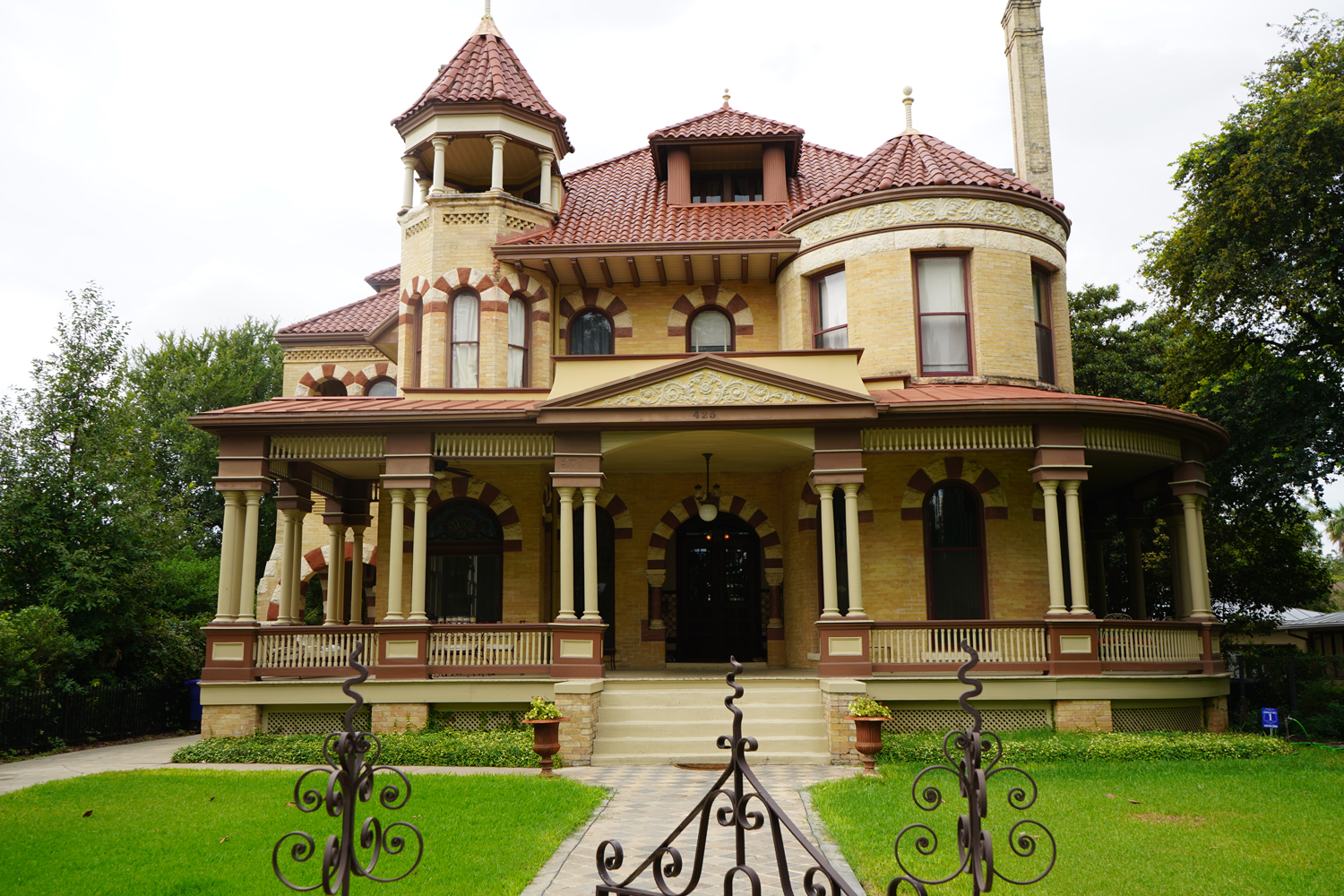George Kalteyer House

425 King William StREET
James Riely Gordon, one of the state’s most celebrated nineteenth century architects, designed this Romanesque Revival house for George Kalteyer, owner of major drug and cement companies and one of the city’s wealthiest residents. It is one of the most architecturally significant structures on this noted street. Gordon was best known as a super courthouse designer, but he was an excellent residential designer as well. This house, with its abundance of polychromed arches, reflects the architect’s mastery of the Romanesque Revival of the 1880s. The fine interior finishes have been fully restored. The majority of Gordon’s domestic work has unfortunately long since been demolished, making this specimen all the more important.
San Antonio Architecture, Traditions and Visions’, AIA San Antonio, 2007
The George Kalteyer House, 425 King William Street
The George Kalteyer House’s masonry, two towers, carved stone belt course on the one tower and polychromatic voussoirs give this high-style Victorian Romanesque its distinctive look. Geroge Kalteyer built this house around 1892. He was founder and president of San Antonio Drug Company and also president of Alamo Cement Company. The latter company was formed after Mr. Kalteyer, a trained chemist, tested some of the clay around San Antonio and found it suitable for making Portland cement. The house is one of the few remaining designed by James Riely Gordon, who designed the Bexar County Courthouse and many others in Texas.
George Kalteyer died in 1897 at the age of 48, leaving his widow, Johanna, who lived on in the home until 1907. Then she built the house at 332 King William because she wanted a simpler residence. Mrs. Kalteyer and Mrs. Ed Steves, Sr., also named Johanna, were good friends as well as neighbors and used to enjoy their afternoon coffee together, first at the home of one and then of the other in turn. They had a custom of calling to each other to this repast by going out on the porch and ringing and small bell.
After selling the Driskill Hotel in Austin for $100,000, Ed Seeling was able to buy this property in 1907. Over the next several years all three of the Seeling daughters were married on the verandah. Daughter Clara and son-in-law T.E. Lowrey continued to live in the home until 1942. When Viola Dismukes bought the house in 1946, it was several apartments. Sidney J. Francis, who purchased the property in 1973, completely restored the property including the combination gas and electric light fixtures. Sidney and Janet Francis sold the property in 2005 to Tobin Walker and Gina Hughes.
The King William Area, A History and Guide to the Houses, Mary V. Burkholder and Jessie N.M. Simpson; published by the King William Association, 2017